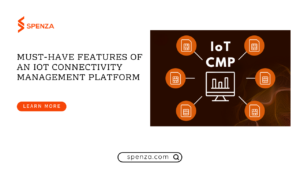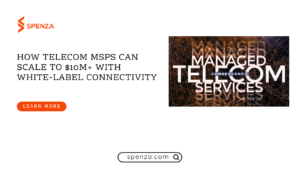
When companies face pressure to reduce costs as margins get squeezed, one of the areas that often faces scrutiny is mobile phone service. Mobile operators are notorious for making billing and service plans complicated and continuing to charge premium rates when lower cost alternatives are available. Some companies even consider eliminating mobile service altogether due to the cost and complexity of managing the service.
The financial calculation that goes into this decision is often more nuanced than just “we pay X, let’s get rid of that cost.” Mobile services are an essential part of modern business both for customer accessibility and the flexibility to work from anywhere. Companies that have offered company-paid service in the past are loath to totally eliminate the benefit as employees will rightly see this as a pay cut and be less likely to respond outside of office hours. Businesses often arrive at the compromise solution of allowing employees to expense their personal mobile service.
While this may seem like the best of both worlds – employees can pick the service they want and the company doesn’t have to manage it – that approach has hidden costs that companies often overlook. I’ve done a quick calculation of the typical time and effort required to process an expense report:
$49 per month just to process the expense report! And that’s on top of whatever the reimbursement is.
Service Comparison Business Case
When these processing costs are added to the overall spend, the business case for eliminating company-provided service is eroded. But what if there was a solution that provided the cost savings, eliminated the hassles of dealing with operators and provided employees with the freedom to select any of the 3 major operators? Read on and see what the iSimplexity solution can provide.
Let’s take a look at a 100 person company and assess how the business case on the various models pencils out…
Background & Assumptions
Our company of 100 people has one person fully dedicated to managing the mobile service, dealing with employee devices, etc. Let’s say that person’s salary is $65,000, so a fully loaded salary + benefits would be $84,500. By moving to a BYO plan and letting employees expense the service, the company could eliminate that position and save the $84K.
A company with 100 lines of service should be able to achieve a 20% discount over standard consumer plans. The typical unlimited consumer plan is $65, so the company would pay $52, a savings of $13 per line per month.
Here’s the in-house vs expensing comparison:
In-House Option
Annual mobile service – $52/line/mo x 12 x 100 = $62,400
In-house management – $84,500
Total cost – $146,900
Expensing Option
Annual mobile service – $65/line/mo x 12 x 100 = $78,000
Expense Processing – $49.38 x 12 x 100 = $59,256
Total cost – $137,256
Savings of $9,644. And if you had a slightly lower salary for your mobile service manager, the savings would completely evaporate. Not exactly a strong business case.
iSimplexity Option
Now what if a company could reduce those overhead costs and still offer the bulk discounted service? With iSimplexity, here’s what the savings would look like:
Mobile Service (Unlimited voice, text, data with 5 GB high speed) – $30 x 12 x 100 = $36,000
iSimplexity Service Fees Platinum Plan – $10 x 12 x 100 = $12,000
Total cost – $46,400
Company cost savings vs in-house plan – $146,900 – $46,400 = $100,500
Company cost savings vs expensing plan – $137,256 – $46,400 = $90,856
Now those are numbers that can make a real difference to a company. When considering alternative mobile service options, take a look at iSimplexity, we might be the best option out there!






